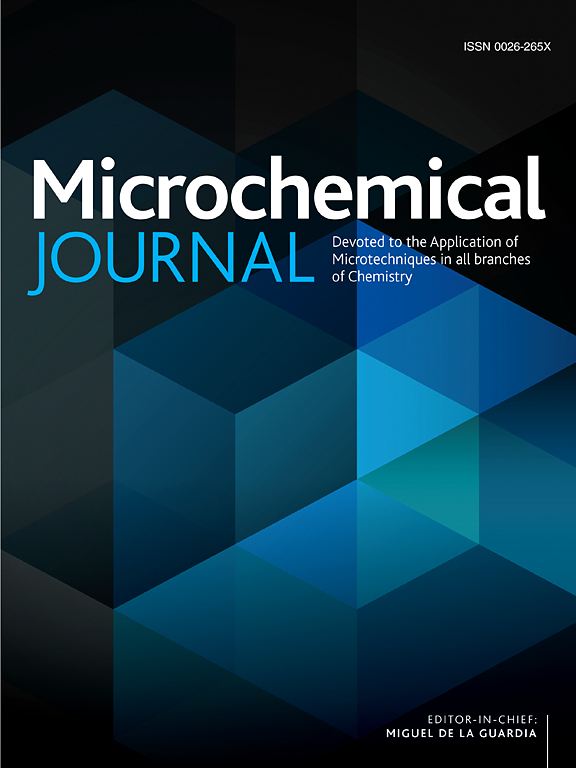Modulating Surface-Enhanced Raman scattering with Hybrid-Gold Nanostructures: PCA-Driven insights into Ultrasensitive detection of dengue virus NS1 IgG
IF 4.9
2区 化学
Q1 CHEMISTRY, ANALYTICAL
引用次数: 0
Abstract
The urgency for effective dengue virus treatment is undeniable, yet surveillance and protection strategies remain paramount. These efforts demand detection platforms that not only deliver superior sensitivity and specificity but also practicality for widespread application. In pursuit of this goal, surface-enhanced Raman scattering (SERS) has been identified as the most promising technique for the detection of anti-dengue virus NS1 (anti-DENV NS1) protein immunoglobulin G (IgG) antibodies. IgG, in particular, has been chosen as the principal target due to the high risk of severe outcomes—such as dengue haemorrhagic fever and dengue shock syndrome—associated with secondary infections. As such, IgG is a more reliable biomarker than immunoglobulin M (IgM) for identifying individuals at critical risk. Gold nanorods (Au-nanorods), with their extraordinary SERS enhancement capabilities, are central to this approach. However, the difficulty of achieving their parallel alignment due to their cylindrical configuration limits their full potential. To address this, gold nanospheres (Au-nanospheres), with a diameter of 10 nm, were synthesized and then hybridized with Au-nanorods in this work. This hybridization maximizes nanorod arrangement by filling unoccupied spaces, enhancing SERS signal intensity through a close-packed structural configuration. These gold nanoparticles (AuNPs) were then functionalized with DENV NS1 protein, specifically to capture anti-DENV NS1 IgG antibodies. However, the functionalization process introduces significant complexity to the SERS spectra due to the wide variety of amino acids in both the antibody and the DENV NS1 protein, resulting in intricate and overlapping signals. Principal component analysis (PCA) was employed to decode the spectral data to resolve these complexities. This refined detection platform achieves an analytical enhancement factor (AEF) of 8.544 × 104, enabling the detection of anti-DENV NS1 IgG at concentrations as low as 25 fg/mL. PCA further reveals phenylalanine as the most dominant amino acid, detected at wavenumbers 1359, 907, and 775 cm−1, followed by alanine at 1226 and 486 cm−1, and aspartic acid at 1164 cm−1.

求助全文
约1分钟内获得全文
求助全文
来源期刊

Microchemical Journal
化学-分析化学
CiteScore
8.70
自引率
8.30%
发文量
1131
审稿时长
1.9 months
期刊介绍:
The Microchemical Journal is a peer reviewed journal devoted to all aspects and phases of analytical chemistry and chemical analysis. The Microchemical Journal publishes articles which are at the forefront of modern analytical chemistry and cover innovations in the techniques to the finest possible limits. This includes fundamental aspects, instrumentation, new developments, innovative and novel methods and applications including environmental and clinical field.
Traditional classical analytical methods such as spectrophotometry and titrimetry as well as established instrumentation methods such as flame and graphite furnace atomic absorption spectrometry, gas chromatography, and modified glassy or carbon electrode electrochemical methods will be considered, provided they show significant improvements and novelty compared to the established methods.
 求助内容:
求助内容: 应助结果提醒方式:
应助结果提醒方式:


